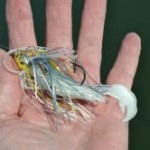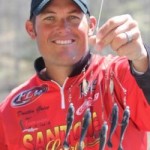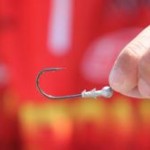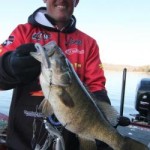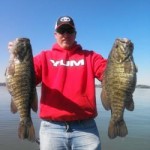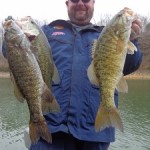Found him! How Missouri DNR Mission Ready wardens helped find a missing teen
Published in Wardens in Action
By Joanne M. Haas/Bureau of Law Enforcement
from The Fishing Wire
The first thing Warden Supervisor Joe Jerich did when he found the shivering, wet missing 17-year-old canoeist in a remote area of Ozaukee County was think of what the teen’s worried mother needed.
“I handed him my phone and told him to call his mom,” Jerich said.
That was about 7:45 a.m. Thursday — about eight hours after a DNR Mission Ready conservation warden team responded to midnight calls to help a multi-agency effort find the boy who flipped his canoe in the swift waters of the Milwaukee River.
The calls roused Jerich from his West Bend home, and Wardens Ryan Propson in Appleton and Sean Neverman in Sheboygan County. Within minutes, Propson, Jerich, Neverman and DNR Pilot Michael Callahan were on their separate ways to join other local law enforcement agencies and fire departments in their search to find the missing boy.
They’re called Mission Ready warden teams – trained to answer calls for help at any hour and to stay with the mission until completed. The DNR Bureau of Law Enforcement has several of these specially trained teams ready to handle emergencies. In this week’s missing person case, the Tactical Flight Officer Team answered the call for assistance from the Grafton Fire Department in eastern Wisconsin.
Propson wasted no time in leaving his home and headed for Wittman Regional Airport in Oshkosh, where the DNR has a plane equipped with a heat-imaging camera known as FLIR. Wardens and pilots have completed hours of training in how to use this camera from the skies to help find missing persons. He was joined by expert pilot Callahan, there to take command of the plane and get the duo in the air and to Ozaukee County — fast!
Jerich and Neverman also were in high gear, traveling from their homes in their warden trucks to the search command post in Ozaukee County.
The Mission Ready warden team added the DNR airplane, a warden boat and two trucks to the multi-agency search team involving the Ozaukee County Sheriff, Port Washington Fire Department, Grafton Fire Department and Mequon Fire Department. The mission? Find the kid.
By the time the wardens were on site, five hours had passed since his mother last heard from her son. That was 8 p.m. Wednesday, just as his cell phone battery was dying and after he had flipped the canoe. And to add to the urgency, the temperatures were on their way down below freezing.
“As soon as we got on site in Ozaukee County, we got more details about the GPS location of that last ping from the missing person’s cell phone,” Propson said. “That gave a start.”
Propson put his hours of training to work and manned the FLIR as pilot Callahan maneuvered the search flight route through the night sky. Jerich joined Neverman, who brought his flat-bottom boat, on land patrols while keeping in constant contact with other search teams and the DNR air team.
Jerich and Neverman drove toward the Milwaukee River with the thought an on-water search was in order. “But, it was very, very swift water,” Jerich said. “We had concerns swift water at night was not a safe situation.”
So, instead of potentially causing yet another flipped boat emergency for even more emergency workers to handle, Jerich and Neverman stayed on land and separated. Neverman took off to search all the area’s water access points in case the boy made it to shore elsewhere, and Jerich joined the ground search, staying in contact with the DNR air team above using the FLIR to detect any and all heat sources below. A human body is a heat source.
The wardens kept the land searches going until Propson and Callahan had to call it off around 3:45 a.m. Thursday.
“The camera was picking up images. But, you didn’t know immediately why it was showing hot. It could be an outdoor stove or a deer,” Propson said. “You had to differentiate what you were looking at. And that determined if we then directed the ground search teams to that spot.”
Propson said the mother of the missing person also knew he had not crossed a specific local bridge, which gave the air and land teams another landmark to plot search patterns. Then, the weather interfered with the FLIR.
“It started to snow and I couldn’t see any more,” Propson said. “So we made the decision to return to Oshkosh and come back at 6:05 Thursday morning and look with just with our eyeballs.”
Two hours later, Jerich was back on the scene to handle foot and land searches guided by directions from the DNR flight crew overhead, flying this morning in a different plane with a different strategy. Fly lower.
“The plane we had in the morning had more windows which made it easier for us to really look — and to continue to look,” Propson said. “We had to fly in very tight circles.”
Callahan said within 10 minutes of starting the search, Propson spotted an aluminum canoe aground on the west bank of the river. The canoe was located in a difficult to access stretch of the river. But, it did look like it fit the description of the missing canoe.
Propson and Callahan then directed Jerich how to drive to get to the general area, and then helped guide him on foot to the canoe through what was a difficult terrain — a flooded, mixed-forest area.
“The plane crew directed me as close as I could get with the four-wheel drive truck and said the canoe is so many hundred yards in on foot,” Jerich said.
Warden Ryan Propson texted success.But Jerich never made it to the canoe.
“In short order, I came upon the boy who was in his green tent,” Jerich said.
The teen had pitched his tent under a stand of very thick pine/juniper trees — a fact that gave Propson an aha moment. “”That explained why we couldn’t see it from the sky or with the camera,” Propson said. “The FLIR does not pick up heat through dense things like tree canopies. The tent will trap the heat inside but hold it under the pine trees.”
Propson was able to detect search personnel, animals and vehicles with the FLIR so the team knew the camera system had functioned properly.
Back on land, Jerich said he was face-to-face with one very cold kid.
“He had no dry clothes to change into after he had gone into the water,” Jerich said. “He spent the night in this tent — and it was cold.”
How cold? The Weather Channel at weather.com shows the overnight low hit 23 degrees at 1:05 a.m. in Grafton and Cedarburg. And the missing teen did not have dry clothes to change into after going into the water.
Still, Jerich said teen appeared to be OK. So Jerich gave him the phone and gentle directive to call his mother — now.
At that point, Jerich radioed his success to the air team of Propson and Callahan, who then directed the land emergency medical teams to the tent site to handle transporting the boy to a local medical facility for evaluation. Neverman, who was on his way to join the search, got the call to turn around because of the happy ending.
Jerich said while it is not a good idea to canoe in a river with such dangerous flooding conditions, the teen did make a good decision. “He stayed in his tent and waited for help.”
Up in the skies, it was a feeling of a job well-done and kudos to DNR Pilot Callahan for maneuvering a successful low pattern for Propson to spot the canoe and to guide Jerich to the boy.
“That was awesome to find him and know he was safe,” Propson said. “It was great.”
Jerich says this was multi-agency teamwork and cooperation at its finest, filled with many ready to help and to serve the public at split-second notice. The only thing that made it even better was finding the young man safe and OK in his tent. He was mighty cold, but he was safe.
And he got to call his mom.
